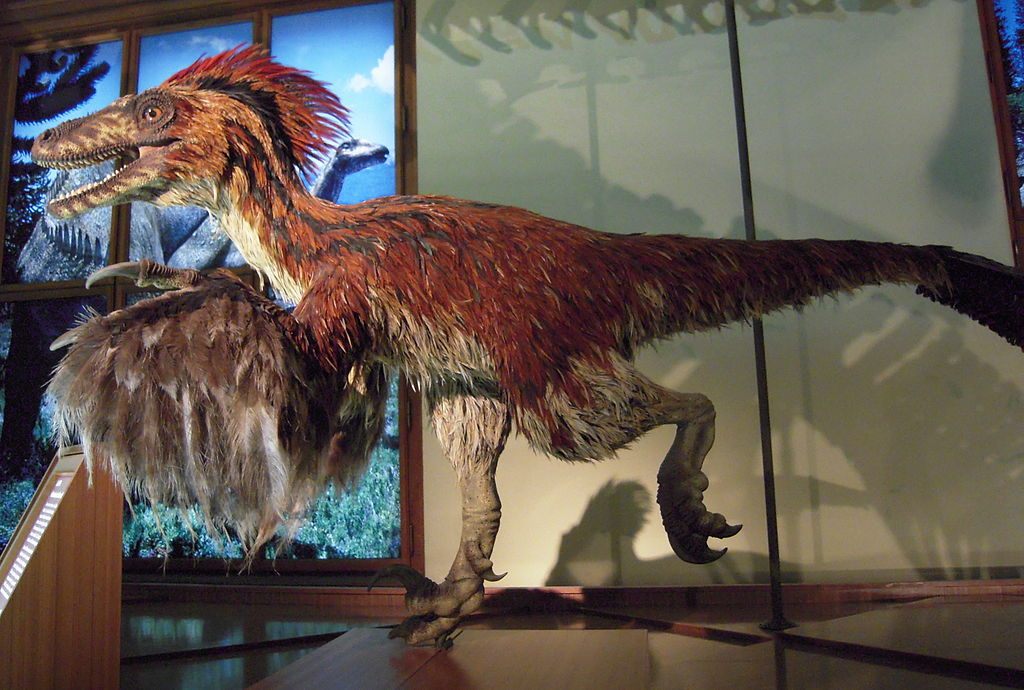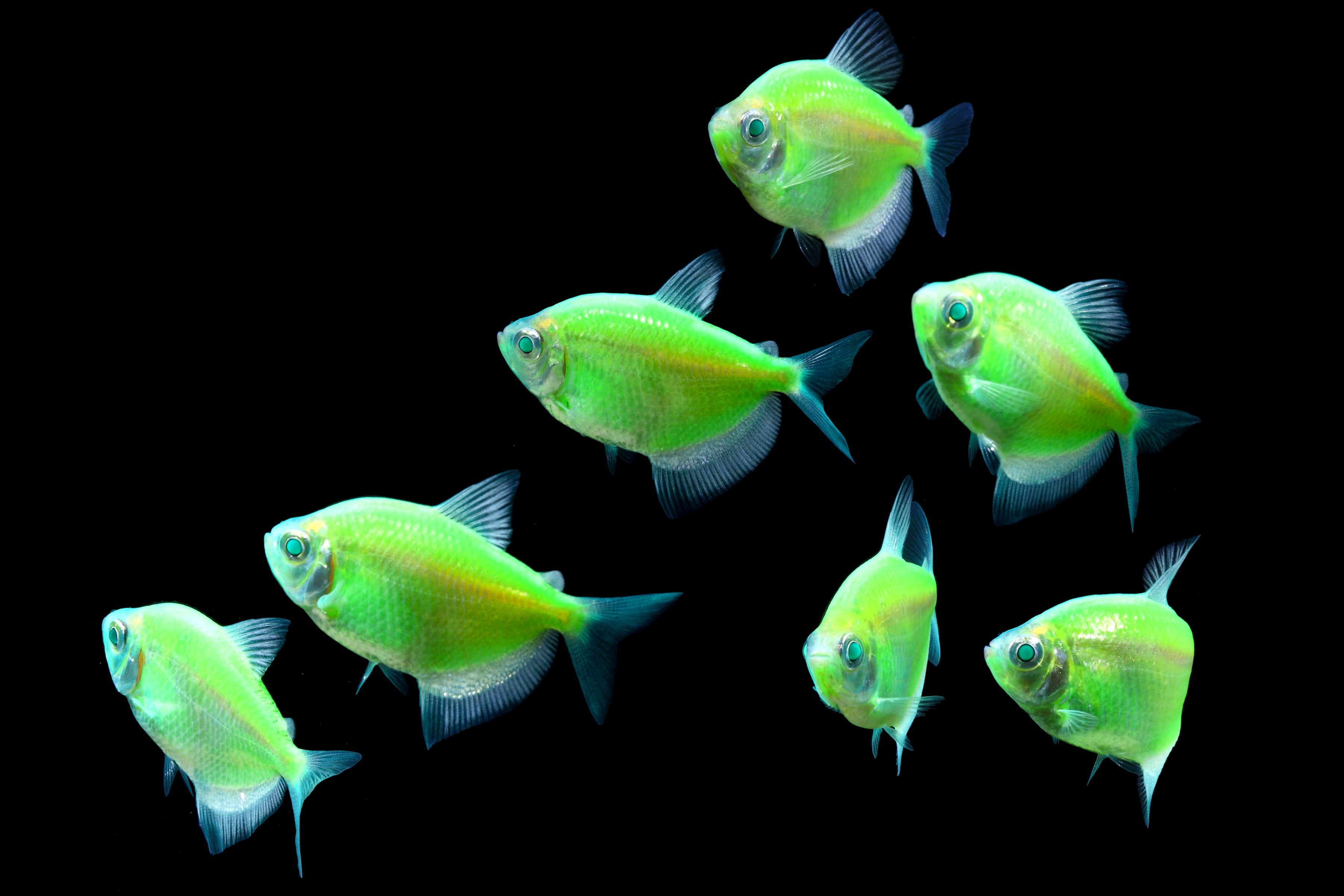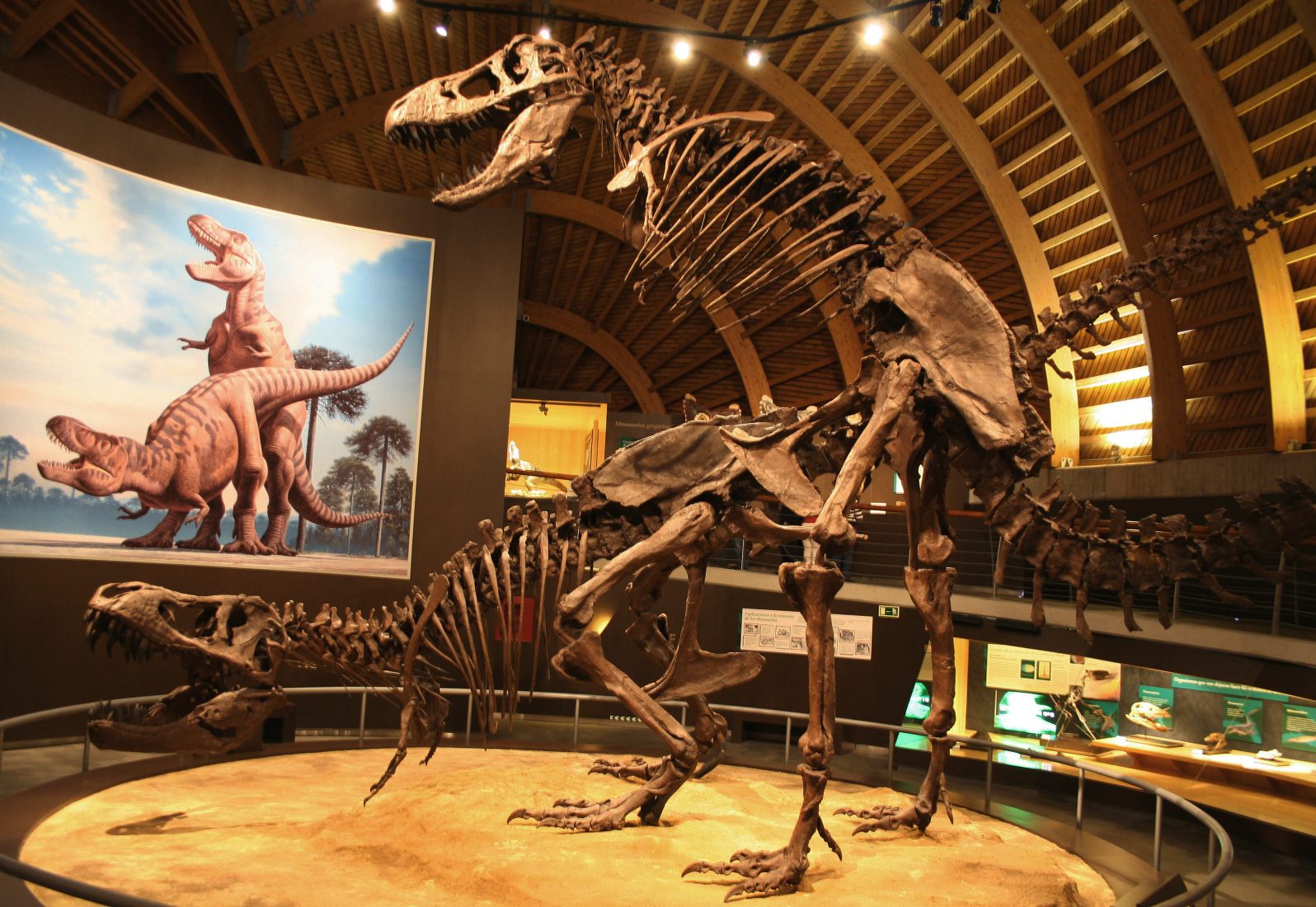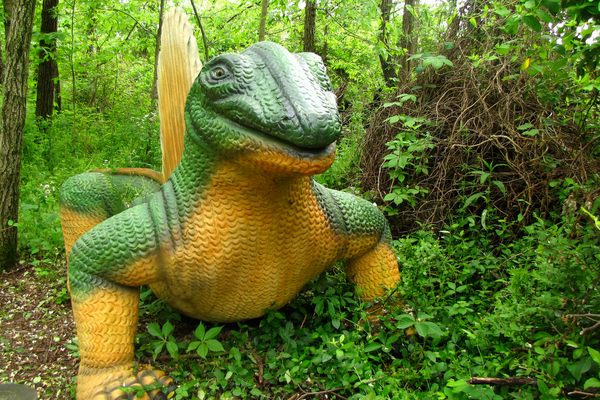What About the Feathers? Talking Scientific Accuracy and Dinosaur Sex with Paleontologist Jack Horner

Nope. (Photo: Domser on Wikipedia)
This Friday, Jurassic World, one of the most hotly anticipated blockbusters of the summer, hits theaters. Judging from the trailer, the fourth iteration of the Jurassic empire features Chris Pratt as some sort of raptor whisperer, Bryce Dallas Howard as the director of the park and some of the best-known dinosaurs (brontosaurus, ankylosaurus, etc.)—as well as a terrifying new genetically-engineered hybrid creature, which inevitably escapes and raises hell.
But one thing that you won’t see is a truly accurate rendition of what scientists think the dinosaurs actually looked like—real velociraptors, for instance, were covered in feathers.
The Jurassic Park franchise is firmly planted in the realm of fiction but both fans of the previous films and scientists alike, have often tried to narrow the gulf between the dinosaurs onscreen and the paleontological truth. To learn more about why everyone’s feathers are getting ruffled (pun intended), we contacted Jack Horner, the world-famous paleontologist who inspired the character of Alan Grant, and who has served as paleontology consultant on all of the Jurassic Park films. In addition to his work on the films, Horner has even been working on a real life effort to create a dinosaur by reverse engineering a chicken. During our conversation Horner spoke with us about the Chickenosaurus, dinosaur sex, and why it’s okay that Jurassic World’s dinos don’t have feathers.
Atlas Obscura: In your role as technical advisor on all of the Jurassic Park films, including the upcoming Jurassic World, how much input did you have in the selection of the species that were featured?
Jack Horner: In Jurassic Park 1 [Jurassic Park], it was kind of a group decision, mostly Steven [Spielberg] wanted to make sure that they were primarily [dinosaurs] that people already knew, that the general public already knew. But a lot of it comes from Michael Crichton, from the original book. Jurassic Park 2[The Lost World] basically features the same dinosaurs as [Jurassic Park], and Jurassic Park 3, I suggested the spinosaurus.
AO: Which was the “big bad” in that film.
JH: And in Jurassic Park 4 [Jurassic World], the latest one, the hybrid is a combination, and it was a number of us who decided what it would be based on.
AO: And is the hybrid that’s coming up kind of a fantastical version of the real-world work you’ve been doing, specifically your work to sort-of reverse engineer a dinosaur from a chicken?
JH: I don’t know if it’s a fantastical rendition of what I’m doing but it is based on the hybrid of… basically the premise is that we brought dinosaurs back from the past by cloning DNA, and now that you have them, you can genetically modify them. So not only are they hybrids, combinations of different dinosaurs, but there’s also some transgenic engineering involved in making this animal as well. In other words taking genes out of different kinds of animals, not even dinosaurs. Other kinds of animals. Giving them traits that other animals have. Like GloFish for example. We make GloFish already. We take glow genes out of a jellyfish and put them in a zebrafish, and make zebrafish that glow.
AO: So this is a version of that, just with more terror?
JH: That’s exactly right [laughs].

GloFish or “Jurassic World: The Prequel” (Photo: Property of GloFish)
AO: What is your favorite species of dinosaur that hasn’t made it to the big screen yet?
JH: I have to say that most of the dinosaurs that I would like to see in real life, I’ve already seen as animatronics in Jurassic Park. They really are the common ones, t-rex, triceratops, stegosaurus are all dinosaurs that we all grow up with and wanna see. There are 800 species of dinosaurs coming up, but one in particular that we haven’t seen yet… The favorite ones really are the favorite ones. t-rex, triceratops, ankylosaurus, stegosaurus, y’know.
AO: I’ve noticed in the trailer that they are adding more aquatic dinosaurs and more avian dinosaurs. In the case of the avian dinosaurs, it looks like they are homogenized into just “pterodactyls.” Are there maybe other sorts of flying dinosaurs that are rarely talked about?
JH: Actually I don’t know if there are any pterodactyls in the movie or not, but there are certainly a lot of pteranodon and quetzalcoatlus, which are the big ones, and their whole notion is to be scary. We have to have some that look like they would be big enough to pick up a person, although they couldn’t possibly have done that.
AO: Because of their true size, or just the physics of doing so?
JH: The physics and the size. I mean we don’t have any flying animals at any point in time that could pick up humans.
AO: This brings me to another point I wanted to ask about. Obviously the Jurassic Park films are optimized to be scary, but what scientific aspect would you have liked to have seen onscreen more than we do, such as feathers on dinosaurs or something?
JH: Well, the feather thing was… We have to maintain consistency across movies. You can’t bring dinosaurs back in the first movie and not have feathers, and then bring back dinosaurs in the fourth movie WITH feathers. We just need to maintain the consistency and y’know, the raptors in Jurassic World are really cool. And I don’t think that missing feathers on their arms is going to take anything away from the movie.
AO: So when they’re running along next to a motorcycle, you don’t think anyone is going to be thinking, ‘Hey, where are the feathers?’
JH: Well, some people undoubtedly will, [laughs] but that’s not the point of the movie. It is a fictional movie, and I’ve had the conversation with Steven, and y’know, he’s right. A technicolor-feather-dinosaur is not as scary as the dinosaurs that are depicted in the movie.

We’re naked! RUN! (Property of Universal Pictures)
AO: In terms of size, a lot of them are huge, are the dinosaurs depicted in the movie roughly the correct size or is that also exaggerated for the screen?
JH: You mean the size of the raptors?
AO: The raptors, the t-rex…
JH: T-Rex is a big animal. I don’t know if you’ve ever been up next to one, but they’re pretty enormous. And yet we don’t know that we’ve found the biggest one yet. All dinosaurs grow most of their life. They all have an ending size. They do actually get skeletally mature like all other animals, but most of them die before they reach that point in time. So we’re always going to find bigger dinosaurs, of every species. So, size is the least of my problems with the way the dinosaurs look.
AO: Going back for a second, it also looks like they’re going to do some aquatic dinosaurs.
JH: Those are marine reptiles, they’re not dinosaurs, but yep. There’s a big, gigantic Mosasaurus in there.
AO: What differentiates a marine reptile from a dinosaur, other than that they live in water?
JH: Well first off, dinosaurs are any reptile that has their legs directly underneath their body. We have our legs directly underneath our body, but we’re mammals, so we don’t count. But any reptile who has their legs directly underneath their body is a dinosaur, and that includes the tyrannosaurs, raptors, birds, you name it. But marine reptiles are more closely related to modern lizards, and dinosaurs are more closely related to birds.
AO: So technically, almost no marine beast would be considered a dinosaur?
JH: Exactly. Well, I take that back just a little ways. An animal that I think was fully-aquatic and lived in rivers and such, was spinosaurus. I actually don’t think spinosaurus ever walked around on the land.
AO: The spinosaurus from Jurassic Park 3?
JH: Yep. We put spinosaurus in the movie running around on land because he’s scary, and he’s big, and he’s the biggest carnivorous dinosaur that ever lived, that we know of.
We had him in the water some, but I don’t actually think he ever came out of the water unless the female came out to lay eggs on land.
AO: The one thing we don’t ever see in these movies is the sexy side of dinosaurs. Do we have enough research to know how dinosaurs had sex?
JH: Yep. We have modern birds and we have modern alligators. Dinosaurs are sort of stuck in between, so. Have you ever seen a bird having sex?
AO: Not in memory.
JH: Well there ya go. We’ve got billions of them and you’ve probably never even seen it happen.

NSFP (Not Safe For Paleontology) (Photo: Mario modesto on Wikipedia)
AO: If you could bring back any dinosaur, which one would you bring back?
JH: Chickenosaurus.
AO: Was that the name you’re going to give it, or will it be the “Hornerosaurus,” or something?
JH: Doesn’t matter what it was named, [just so long as it comes back].
AO: How many years out until you feel that the Chickenosaurus is the hot pet of the holiday season?
JH: Well, I think that’s probably quite a ways out, but I think we’ll have one in the next decade.
AO: Will they be the size of chickens or will they be much larger?
JH: I don’t want one much larger, chickens are nasty enough.
AO: Do you know if Alan Grant is coming back in [Jurassic World], and if not, are you hurt?
JH: I can’t really tell you that. Y’know every time he’s around these dinosaurs he has a chance of getting eaten, and I’m just glad he hasn’t gotten eaten yet.

BACK OFF ABOUT THE FEATHERS! (Property of Universal Pictures)
















Follow us on Twitter to get the latest on the world's hidden wonders.
Like us on Facebook to get the latest on the world's hidden wonders.
Follow us on Twitter Like us on Facebook